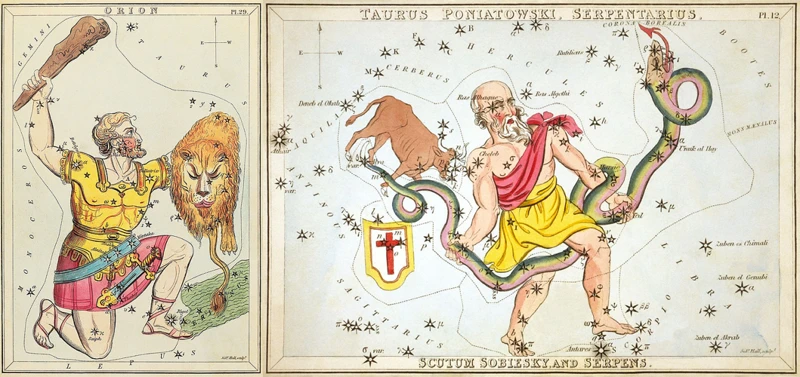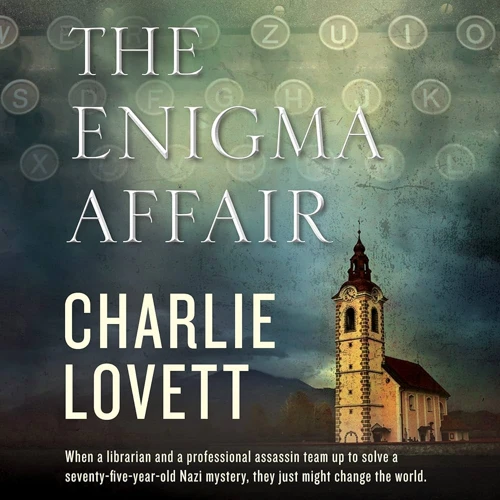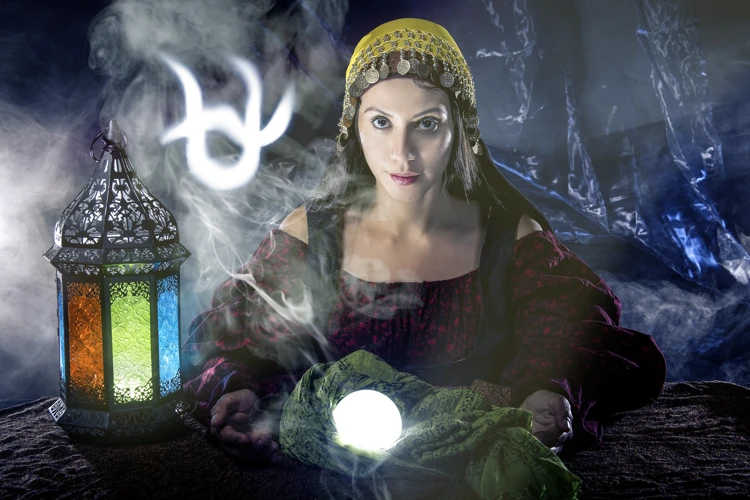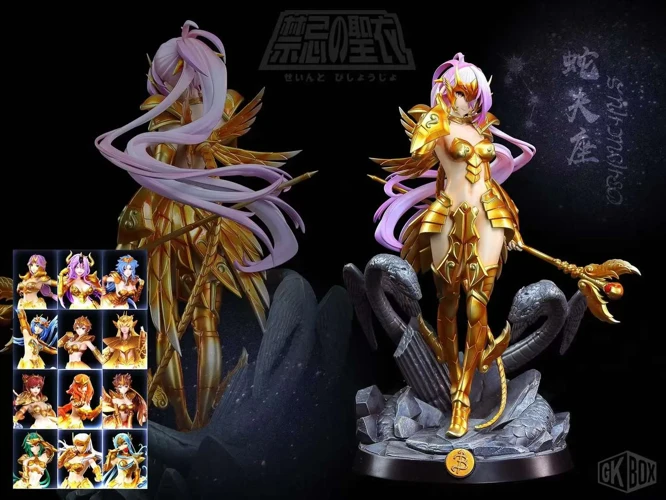Once upon a time, in a land steeped in legend and enchantment, there existed a rich tapestry of Celtic mythological tales filled with heroism and adventure. The warriors of ancient Ireland fought fierce battles, embarking on epic quests, and encountered a vast array of magical creatures. From the valiant Cú Chulainn, known as the Hound of Ulster, to the legendary leader Fionn mac Cumhaill, these heroic figures captured the imaginations of generations. Journey with us as we delve into the captivating realm of Celtic mythology, exploring the tales of warrior heroes, extraordinary quests, and the mystical beings that filled the land. Prepare to be enthralled by the folklore that has captivated hearts for centuries.
Contents
- The Warrior Heroes
- The Quests and Adventures
- Magical Creatures and Beings
- Conclusion
-
Frequently Asked Questions
- Who were the warrior heroes of Celtic mythology?
- What made Cú Chulainn a heroic figure?
- Who led the Fianna in Celtic mythology?
- What is the significance of the Táin Bó Cúailnge?
- What was the Pursuit of the Salmon of Wisdom?
- Who or what is the Banshee in Celtic mythology?
- What is the significance of the Púca in Celtic mythology?
- Are there any historical events intertwined with Celtic mythology?
- What is the role of women in Celtic mythology?
- How has Celtic mythology influenced modern literature and popular culture?
- References
-
Frequently Asked Questions
- 1. Who were the Celtic warrior heroes?
- 2. Tell me about Cú Chulainn – The Hound of Ulster.
- 3. Who was Fionn mac Cumhaill?
- 4. What is the Táin Bó Cúailnge?
- 5. What is the pursuit of the Salmon of Wisdom?
- 6. Who is the Banshee?
- 7. Tell me about the Púca – the shapeshifting trickster.
- 8. What were the main themes in Celtic mythological tales?
- 9. Were Celtic mythological tales passed down orally?
- 10. How do Celtic mythological tales continue to influence modern culture?
- References
- Read More
The Warrior Heroes

Within the realm of Celtic mythology, the warrior heroes stood as paragons of bravery and skill, capturing the hearts and imaginations of all who heard their tales. Cú Chulainn, known as the Hound of Ulster, possessed supernatural strength and agility, able to vanquish foes with ease. His exploits in battle and his tragic fate have cemented him as a legendary figure in Celtic folklore. Another esteemed hero, Fionn mac Cumhaill, displayed extraordinary leadership and prowess, leading his band of warriors known as the Fianna. With their daring feats and indomitable spirit, these warrior heroes exemplified qualities of honor, courage, and loyalty, continuing to inspire generations to this day.
Cú Chulainn – The Hound of Ulster
Cú Chulainn, also known as the Hound of Ulster, was a formidable figure in Celtic mythology. Born with the name Setanta, he gained his renowned title after defeating the fierce watchdog of the great blacksmith Culann. Possessing superhuman strength and agility, Cú Chulainn became a legendary warrior, feared by enemies and revered by allies. One of his most iconic attributes was his ríastrad, a battle frenzy that transformed him into an unstoppable force on the battlefield. Cú Chulainn’s loyalty to his homeland of Ulster was unwavering, and he defended it against any threats that arose. His tales of heroism tell of countless battles fought and won, as well as his tragic demise at the hands of enemies who exploited a temporary weakness. Despite his eventual tragic fate, Cú Chulainn’s legacy endures and serves as a symbol of honor, bravery, and determination.
Fionn mac Cumhaill – The Legendary Leader
Fionn mac Cumhaill, also known as Finn McCool, is a legendary figure in Celtic mythology revered for his exceptional leadership and wisdom. As the leader of the Fianna, a renowned band of warriors, Fionn mac Cumhaill displayed unparalleled prowess and strategy on the battlefield. He was renowned for his ability to inspire and unite his warriors, leading them to victory against formidable foes. Fionn was not only a skilled warrior but also a wise and just ruler, known for his fair judgment and quick thinking. One prominent tale surrounding Fionn is the story of the Salmon of Wisdom. According to legend, Fionn gained immense knowledge and insight by consuming the flesh of this sacred fish. This event elevated his status as a leader and cemented his place in Celtic folklore. Fionn mac Cumhaill’s leadership and legendary exploits continue to inspire leaders and warriors alike, showcasing the enduring power of his legacy.
The Quests and Adventures

Embark on a journey into the realm of Celtic mythology as we explore the captivating quests and epic adventures that unfolded within this mystical world. One such legendary tale is that of the Táin Bó Cúailnge, also known as the Cattle Raid of Cooley. This gripping saga tells the story of the ultimate battle for a prized bull between the provinces of Ulster and Connacht. Filled with treacherous schemes, heroic deeds, and remarkable feats of courage, the Táin Bó Cúailnge remains a testament to the valor and determination of its characters. Another renowned quest is the Pursuit of the Salmon of Wisdom, in which Fionn mac Cumhaill sought the mystical fish to gain its infinite knowledge. Join us as we unravel these extraordinary narratives that highlight the strength, resourcefulness, and unwavering spirit of the Celtic heroes.
The Táin Bó Cúailnge – Cattle Raid of Cooley
In the realm of Celtic mythology, one of the most celebrated and epic tales is that of “The Táin Bó Cúailnge,” also known as the Cattle Raid of Cooley. This legendary story centers around the heroic warrior Cú Chulainn and his remarkable undertaking to defend the province of Ulster from the invading Connacht forces. The saga begins when Queen Medb of Connacht becomes consumed by her desire for the magnificent bull owned by the Ulster king. In her quest to claim the coveted bull, Medb assembles a formidable army, including mighty warriors and otherworldly creatures.
The Táin Bó Cúailnge sees Cú Chulainn single-handedly defending Ulster against overwhelming odds. With his unmatched skill in combat and his renowned war cry, the young hero fearlessly challenges Medb’s forces. Throughout the conflict, Cú Chulainn engages in awe-inspiring duels with enemy champions and displays incredible feats of valor. Despite facing countless adversaries, he emerges triumphant, inflicting heavy losses upon the Connacht army.
However, it is during the pivotal encounter with his arch-rival, Ferdia, that the true depth of Cú Chulainn’s heroism is revealed. Bound by loyalty and honor, the two friends-turned-foes engage in a prolonged and emotional battle. Their combat showcases not only Cú Chulainn’s physical prowess but also his internal struggle with the consequences of his actions. In the end, Cú Chulainn emerges victorious, but at a great personal cost, as he mourns the loss of his friend.
The Táin Bó Cúailnge is a saga filled with breathtaking action, complex characters, and profound themes of duty, loyalty, and sacrifice. It has captivated audiences for centuries with its vivid descriptions of battles, the journey of Cú Chulainn, and the clash of warring kingdoms. This mythological tale serves as a testament to the enduring power of heroism and the indomitable spirit of Celtic legends.
The Pursuit of the Salmon of Wisdom
In the realm of Celtic mythology, the pursuit of the Salmon of Wisdom is a captivating tale that showcases the thirst for knowledge and the lengths one would go to attain it. According to legends, the Salmon of Wisdom resided in the sacred well of Segais, where it possessed all the knowledge of the world. It was said that whoever tasted its flesh would be bestowed with immeasurable wisdom. In this legendary quest, the great druid Finnegas spent years fishing for the elusive salmon, eagerly awaiting the day he would be granted its profound wisdom.
One day, a young warrior named Fionn mac Cumhaill arrived at the well, unaware of the significance it held. As Finnegas continued his tireless pursuit, Fionn offered to cook the fish for him. While preparing the salmon, he accidentally burned his thumb and instinctively put it into his mouth to soothe the pain. And in that instant, the wisdom of the salmon was transmitted to Fionn.
Realizing the significance of what had occurred, Finnegas recognized Fionn as the one destined to possess the wisdom of the salmon. Fionn went on to become a legendary leader and wise warrior, renowned for his wisdom and strategic thinking.
The Pursuit of the Salmon of Wisdom teaches us the value of knowledge and the unexpected ways in which wisdom can be attained. It symbolizes the importance of seizing opportunities, even when they present themselves in unlikely circumstances.
The Pursuit of the Salmon of Wisdom is a cherished tale of Celtic mythology, exemplifying the eternal human quest for knowledge and the transformative power it holds. It serves as a reminder that wisdom can be found in the most unexpected places, and those who are open to learning and embracing new experiences may find themselves elevated to great heights of understanding and insight.
Magical Creatures and Beings

Venture into the enchanting realm of Celtic mythology, and you will encounter a fascinating array of magical creatures and beings that filled the land. The Banshee, an ethereal spirit, is renowned as the harbinger of death, her mournful wails foretelling impending doom. Said to be a guardian of the faerie realm, the Púca is a shapeshifting trickster who delights in playing pranks on unsuspecting humans. These mystical creatures, with their elusive nature and otherworldly powers, have captivated the imaginations of storytellers and listeners alike throughout the ages. Legends and tales paint vivid portraits of their appearances and interactions with mortal beings, weaving a tapestry of wonder and intrigue. As you delve deeper into the realm of Celtic mythology, be prepared to encounter these enigmatic creatures and be swept away by their captivating presence.
The Banshee – Harbinger of Death
The Banshee, a haunting figure deeply rooted in Celtic mythology, is known as the harbinger of death. In Irish folklore, she is often described as a gaunt, ghostly woman with long, disheveled hair and wearing a grey or white flowing gown. The Banshee’s mournful wails, heard in the still of the night, are said to foretell the imminent passing of someone in the family she is associated with. These bone-chilling cries are believed to be an omen of death, striking fear into the hearts of all who hear them. Legend has it that each family has its own Banshee, whose ethereal presence serves as a forewarning to prepare for the inevitable loss of a loved one. It is said that encountering the Banshee’s piercing cries may even bring about one’s own demise. The reverence and fear surrounding the Banshee in Celtic folklore reflect the deep-rooted beliefs in the spiritual realm and the interconnectedness of life and death.
The Púca – Shapeshifting Trickster
The Púca is a mesmerizing and mischievous creature from Celtic myth, well-known for its ability to shapeshift into various forms. In Irish folklore, this trickster spirit often takes the form of a horse, although it can also appear as a goat, a rabbit, or a young man with pointed ears and red eyes. The Púca possesses an unpredictable nature, known to play pranks on unsuspecting individuals or lead travelers astray. Farmers often left offerings of food for the Púca, hoping to garner its favor and avoid its mischievous tricks. While it was generally considered mischievous rather than malevolent, the Púca could also serve as a warning, appearing before a great tragedy or as a harbinger of impending doom. This mystical being adds a sense of mystery and intrigue to the already rich tapestry of Celtic mythology, reminding us of the unpredictable nature of the world around us. The Púca’s ability to shift forms highlights the ever-changing and transformative aspects of life, a theme woven throughout many mythological traditions. So, be cautious when encountering this creature in any of its guises, for you never know what tricks and surprises it may have in store.
Conclusion

In conclusion, the Celtic mythological tales of heroism and adventure have left an indelible mark on the collective consciousness. These stories not only entertained, but also served as a reflection of the values and beliefs of the ancient Celts. The warrior heroes, such as Cú Chulainn and Fionn mac Cumhaill, embodied the ideals of courage, honor, and bravery. Their legendary feats and the challenges they overcame captivated audiences, reminding them of the strength and resilience of the human spirit. The quests and adventures woven throughout Celtic mythology showcased not only the physical prowess of the heroes, but also their moral character, as they faced trials and made choices that tested their integrity. Furthermore, the presence of magical creatures and beings added an element of mysticism, enchantment, and wonder to these tales, further igniting the imagination and curiosity of listeners and readers alike. As we delve into the rich tapestry of Celtic mythology, we are reminded of the enduring power of storytelling and the lessons we can glean from these ancient tales. The legacy of Celtic mythology lives on, inspiring us to embrace our inner hero, face adversity with courage, and embark on our own quests for knowledge and self-discovery.
Frequently Asked Questions

Who were the warrior heroes of Celtic mythology?
The warrior heroes of Celtic mythology were legendary figures known for their bravery and skill in battle. Some of the most famous warrior heroes include Cú Chulainn, the Hound of Ulster, and Fionn mac Cumhaill, the legendary leader of the Fianna.
What made Cú Chulainn a heroic figure?
Cú Chulainn was hailed as a hero due to his exceptional strength and agility in battle. He was also known for his fierce loyalty and unwavering determination, making him a formidable opponent to any who dared to challenge him.
Who led the Fianna in Celtic mythology?
The Fianna, a band of brave warriors in Celtic mythology, were led by Fionn mac Cumhaill. Fionn was renowned for his strategic prowess, wisdom, and bravery, earning him great respect and admiration among his warriors.
What is the significance of the Táin Bó Cúailnge?
The Táin Bó Cúailnge, also known as the Cattle Raid of Cooley, is an epic tale of heroism and battle. It is one of the most famous and significant stories in Celtic mythology, showcasing the strength and courage of Cú Chulainn as he defends Ulster against an invading army.
What was the Pursuit of the Salmon of Wisdom?
The Pursuit of the Salmon of Wisdom is a captivating Celtic mythological tale. It revolves around Fionn mac Cumhaill’s quest to gain supreme knowledge by catching and consuming a magical salmon. This story highlights the theme of wisdom and the arduous journey that heroes undertake in their pursuit of enlightenment.
Who or what is the Banshee in Celtic mythology?
The Banshee is a mystical being in Celtic folklore associated with death. She is often depicted as a female spirit who wails or screams as a warning of an impending demise. The Banshee is believed to be a harbinger of death and is deeply ingrained in Irish mythology.
What is the significance of the Púca in Celtic mythology?
The Púca is a mischievous shapeshifting creature in Celtic mythology. It is known for its ability to transform into various forms, often appearing as a horse, goat, or rabbit. The Púca is associated with both tricks and good fortune, leaving people both wary and intrigued by its presence.
Are there any historical events intertwined with Celtic mythology?
While Celtic mythology is primarily a collection of oral traditions passed down through generations, there are certain historical events and cultural influences that have shaped these stories. The arrival of the Celts in Ireland, conflicts with invading forces, and interactions with other ancient cultures have likely influenced the mythological tales we hear today.
What is the role of women in Celtic mythology?
Women play significant roles in Celtic mythology, often depicted as powerful and mystical figures. They can be warrior queens, wise enchantresses, or magical beings. Examples include Queen Medb of Connacht and the goddess Brigid, who is associated with healing, poetry, and craftsmanship.
How has Celtic mythology influenced modern literature and popular culture?
Celtic mythology has had a profound impact on modern literature and popular culture. Its themes of heroism, adventure, and magical beings have inspired countless books, movies, and artistic works. From J.R.R. Tolkien’s “The Lord of the Rings” to contemporary fantasy novels, Celtic mythology continues to captivate and fuel the imagination of storytellers worldwide.
References
- Heroes in Celtic & Irish Mythology
- Heroes, Gods and Monsters of Celtic Mythology
- Celtic Mythology: Dive Into The Depths Of Ancient …
Frequently Asked Questions

1. Who were the Celtic warrior heroes?
The Celtic warrior heroes were legendary figures who displayed incredible bravery and skill in battle. They were revered for their physical prowess and often undertook dangerous quests and adventures.
2. Tell me about Cú Chulainn – The Hound of Ulster.
Cú Chulainn, also known as the Hound of Ulster, was a famous warrior hero in Celtic mythology. He possessed superhuman strength, agility, and endurance. His most famous tale is the Táin Bó Cúailnge, where he single-handedly defends Ulster from invading forces.
3. Who was Fionn mac Cumhaill?
Fionn mac Cumhaill was a legendary leader and warrior in Celtic mythology. He was known for his wisdom, courage, and skilled hunting abilities. Fionn was the central figure of the Fenian Cycle, a collection of stories about him and his band of warriors, the Fianna.
4. What is the Táin Bó Cúailnge?
The Táin Bó Cúailnge, also known as the Cattle Raid of Cooley, is an epic tale in Celtic mythology. It recounts the war over a prized bull between Ulster and Connacht. This epic battle showcases the heroic deeds of many Celtic warrior heroes, including Cú Chulainn.
5. What is the pursuit of the Salmon of Wisdom?
The pursuit of the Salmon of Wisdom is a legendary quest in Celtic mythology. It revolves around gaining immense knowledge and wisdom. The story follows Fionn mac Cumhaill, who catches and consumes the Salmon, granting him extraordinary wisdom and foresight.
6. Who is the Banshee?
The Banshee is a mythical being in Celtic folklore. She is considered a harbinger of death and is often associated with supernatural wailing or keening. The Banshee appears to foretell the impending demise of a family member or loved one.
7. Tell me about the Púca – the shapeshifting trickster.
The Púca is a mischievous and shapeshifting creature in Celtic mythology. It can appear in various forms, such as a horse, goat, or rabbit. The Púca often plays tricks on unsuspecting travelers, but it can also bring good luck and fortune.
8. What were the main themes in Celtic mythological tales?
Some of the main themes in Celtic mythological tales include heroism, bravery, quests, battles, magical creatures, and the pursuit of wisdom. These stories often showcased the triumph of good over evil and emphasized the importance of honor and loyalty.
9. Were Celtic mythological tales passed down orally?
Yes, Celtic mythological tales were primarily passed down orally from one generation to another. Bards and storytellers preserved and recited these stories, ensuring the myths and legends were shared and remembered throughout history.
10. How do Celtic mythological tales continue to influence modern culture?
Celtic mythological tales continue to influence modern culture in various ways. They inspire works of literature, art, and even movies. Many elements from Celtic mythology, such as heroic figures and magical creatures, have become popular tropes in fantasy genres.
References
- Celtic Mythology: Dive Into The Depths Of Ancient …
- Irish mythology
- Heroes, Gods and Monsters of Celtic Mythology







